DPI, Dots per Inch
"dots per inch" (dpi, Punkte pro Zoll) ist eine Einheit für die Punktdichte, die wiederum ein Maß für die Detailgenauigkeit (Auflösung) einer gerasterten Darstellung ist.
Bilddateien und die Geräte, mit denen sie erstellt, verarbeitet oder wiedergegeben werden, haben im Allgemeinen sowohl eine absolute Auflösung als auch eine relative Auflösung.
Absolute Auflösung
Die absolute Auflösung beschreibt die Anzahl der Bildpunkte („dots“) in einer Richtung oder insgesamt. So sind folgende Darstellungsvarianten üblich: die Angabe der Gesamtanzahl aller dots (z.B. 6,1 Megapixel bei Digitalkameras) oder als Angabe der Anzahl aller dots pro Zeile/Linie oder Spalte (z.B. 1024x768 bei Bildschirmen).
Die absolute Auflösung bestimmt die Datenmenge und damit die mögliche Wiedergabequalität einer Bilddatei, sowohl in digitaler als auch in gedruckter Form. Siehe auch Bildauflösung.
Relative Auflösung
Die relative Auflösung ist die Anzahl der Bildbasiselemente pro Längeneinheit und wird angegeben in:
- dpi = dots per inch
- ppi = pixel per inch
- lpi = lines per inch
Sie wird auch genauer Punkt-, Pixel- bzw. Zeilendichte genannt. Das Inch ist hierbei das internationale Zoll von 2,54 cm.
Bei Ein- und Ausgabegeräten (z. B. Scanner, Drucker, Bildschirme, Belichter usw.) gibt die relative Auflösung die Dichte der Bildpunkte an.
Bei Bilddateien gibt die relative Auflösung an, mit welcher Dichte die Bildpunkte auf einem Ausgabegerät wiedergegeben werden sollen.
DPI im metrischen System
Statt der Dichte lässt sich auch die Größe eines einzelnen Bildpunktes bzw. die Dicke einer Linie oder Zeile angeben. Diese Methode kommt wegen der Verwendung metrischer Einheiten nicht nur dem nicht-amerikanischen Laien entgegen.
Ein Beispiel:
Eine Auflösung von 1200 dpi horizontal und 600 dpi vertikal entspricht bspw. einer Punktgröße von 211⁄6 × 421⁄3 µm.
1200 dpi horizontal bedeuten, dass sich 1200 Punkte in der Horizontalen auf 2,54 cm verteilen.
Demnach hat ein Punkt in der Horizontalen eine Kantenlänge von
2,54 cm / 1200 = 0,00211(6) cm = 211⁄6 µm.
Da die Auflösung in der Vertikalen nur 600 dpi beträgt, ist hier ein Punkt deutlich länger, nämlich 2,54 cm / 600 = 0,0042(3) cm = 421⁄3 µm. Daraus ergibt sich eine Gesamtfläche eines einzigen Punktes von 211⁄6 µm × 421⁄3 µm = 8961⁄18 µm².
Beispiele für DPI-Angaben
In der folgenden Liste sind einige typische dpi-Werte für die Bildwiedergabe angegeben. Hierbei ist zu berücksichtigen, dass die effektive Auflösung von Druckern und Scannern häufig deutlich unter der physikalischen (also nominellen) Auflösung liegt. Wegen der Drucktechnik werden bei Tintenstrahldruckern die Bildpunkte häufig innerhalb einer 8x8-Matrix gedruckt, so dass die effektive Auflösung um den Faktor acht kleiner ist als die physikalische. Bei Scannern ist die abbildende Optik häufig der begrenzende Faktor, so dass die durch kleine Schrittweiten des Vortriebs oder entsprechend kleine Scaneinheiten vorgegebenen physikalischen dpi-Werte in den gescannten Bildern teilweise bei weitem nicht erreicht werden.
Anwendung der Auflösung:
82-cm-Fernsehbildschirm (1366 x 768 Bildpunkte) 50 dpi
Poster DIN A0 50 dpi
Poster DIN A1 75 dpi
Zeitschriften 300 dpi
Laborabzüge (Fotos) 300 dpi
Thermosublimationsdrucker 300 bis 400 dpi
Laserdrucker 300 bis 1200 dpi (effektiv)
Tintenstrahldrucker 300 bis 1200 dpi (effektiv)
Flachbettscanner 600 bis 1200 dpi (effektiv)
hochauflösende 35-Millimeter-Filme bis 3000 dpi
hochwertige Filmscanner bis 3600 dpi (effektiv)
optische Computermäuse 400 bis 2200 dpi
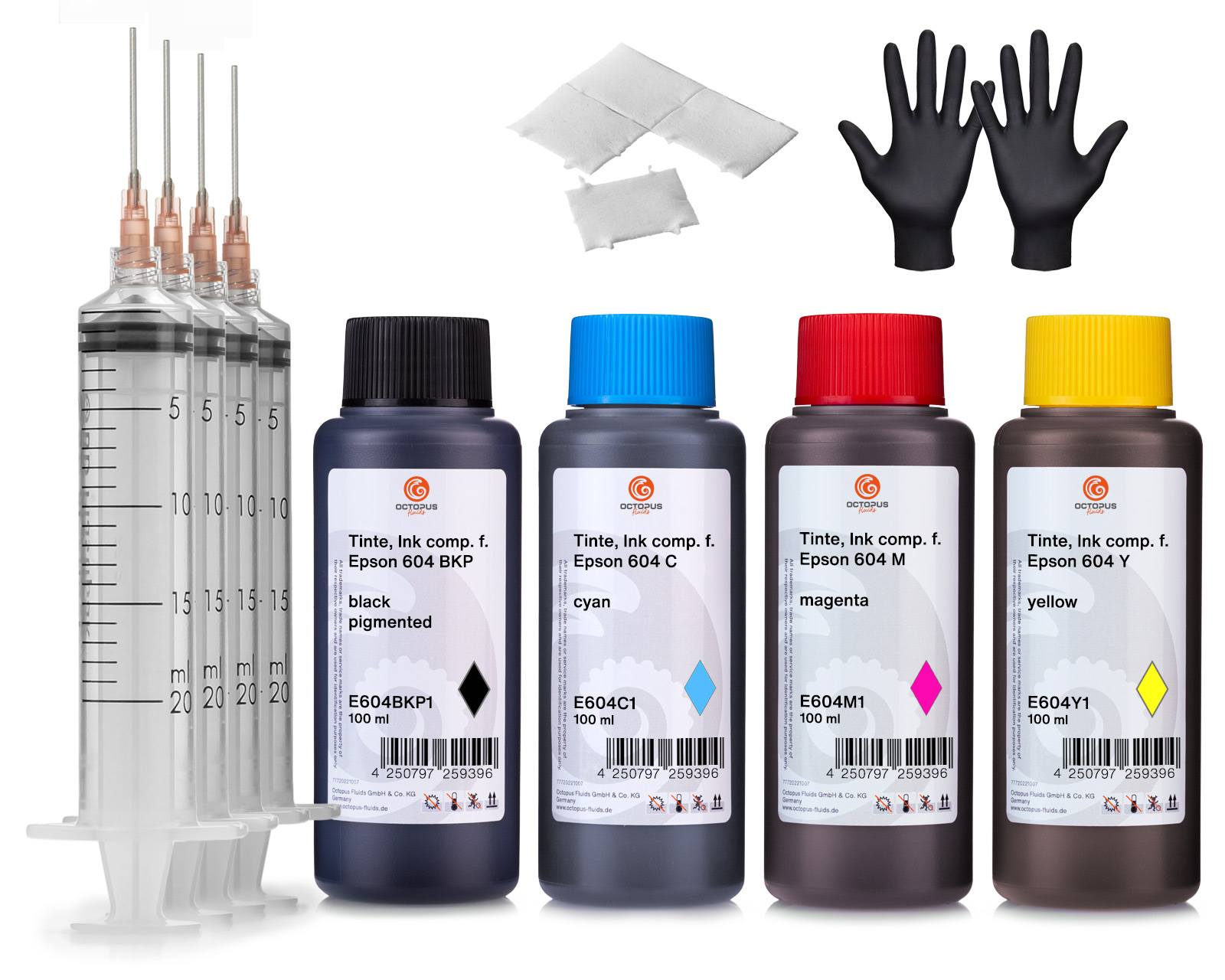 Octopus printer ink set compatible for Epson 604 ink cartridges, WorkForce 2950DWF 2930DWF
Octopus printer ink set compatible for Epson 604 ink cartridges, WorkForce 2950DWF 2930DWF
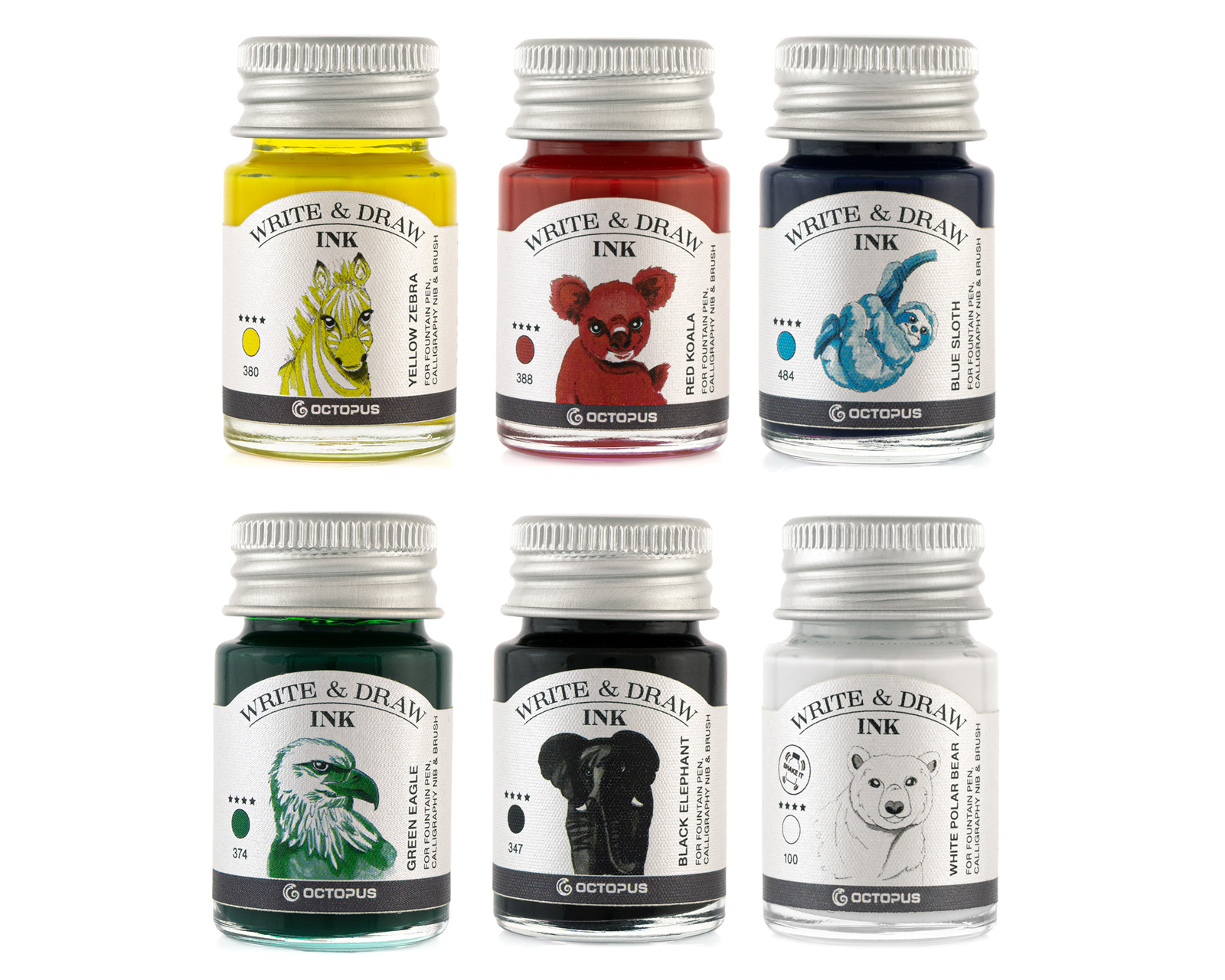 Write and Draw Ink Set, waterproof drawing ink for fountain pens, 6 colours
Write and Draw Ink Set, waterproof drawing ink for fountain pens, 6 colours
Octopus Write & Draw Ink, waterproof ink for fountain pen, nib and brush, vegan
The Octopus Write & Draw inks are unique, smudge-proof and waterproof writing and drawing inks in a wide range of colours. They were developed for daily use in fountain pens and are also popular with graphic artists, illustrators, calligraphers and artists for writing, sketching, drawing and colouring with calligraphy pens, glass pens or brushes.
Each of the 38 brilliant shades inspires with its intense colour power thanks to its high, balanced pigmentation. In addition to a deep black and various shades of grey, the extensive colour palette also includes a particularly opaque white, which can be used on dark backgrounds.
During the development of the drawing ink, special attention was paid to its use in the fountain pen. The use of the finest colour pigments in a carefully balanced formula ensures high light fastness and a good, even ink flow without clogging the ink duct of the fountain pen. These pigmented writing inks also feature the excellent writing behaviour of the classic Octopus fountain pen inks. The Write & Draw drawing ink meets the requirements for document-proof ink according to DIN ISO 12757-2 and DIN ISO 14145-2 and is produced exclusively with vegan ingredients.
Writing enthusiasts love the razor-sharp typeface that can be achieved on fountain pen-suitable paper and the pleasant shading of the Write & Draw writing ink. Calligraphers can create the finest hairlines and impressive flourishing elements, while urban sketchers can draw precise outlines.
The ink dries waterproof in a very short time and can then be painted over with another shade of Octopus Write & Draw ink or watercolour. It is eraser-proof and most of the colours are also highlighter-proof.
Both pure and diluted with water, Octopus Write & Draw ink is excellent for colouring. Used undiluted, the waterproof ink convinces with its opacity. The many colours of Octopus drawing ink can be mixed with each other, but also with water. In this way, countless colour shades can be achieved for beautiful watercolour effects.
Unlike most other waterproof inks, Octopus Write & Draw can be used in a fountain pen without hesitation. However, care should be taken not to let the fountain pen dry out. We therefore recommend that you rinse and clean your writing instrument carefully after use to prevent the ink from drying up accidentally.
The Octopus special cleaner for pigmented inks is available for cleaning your writing Instruments.
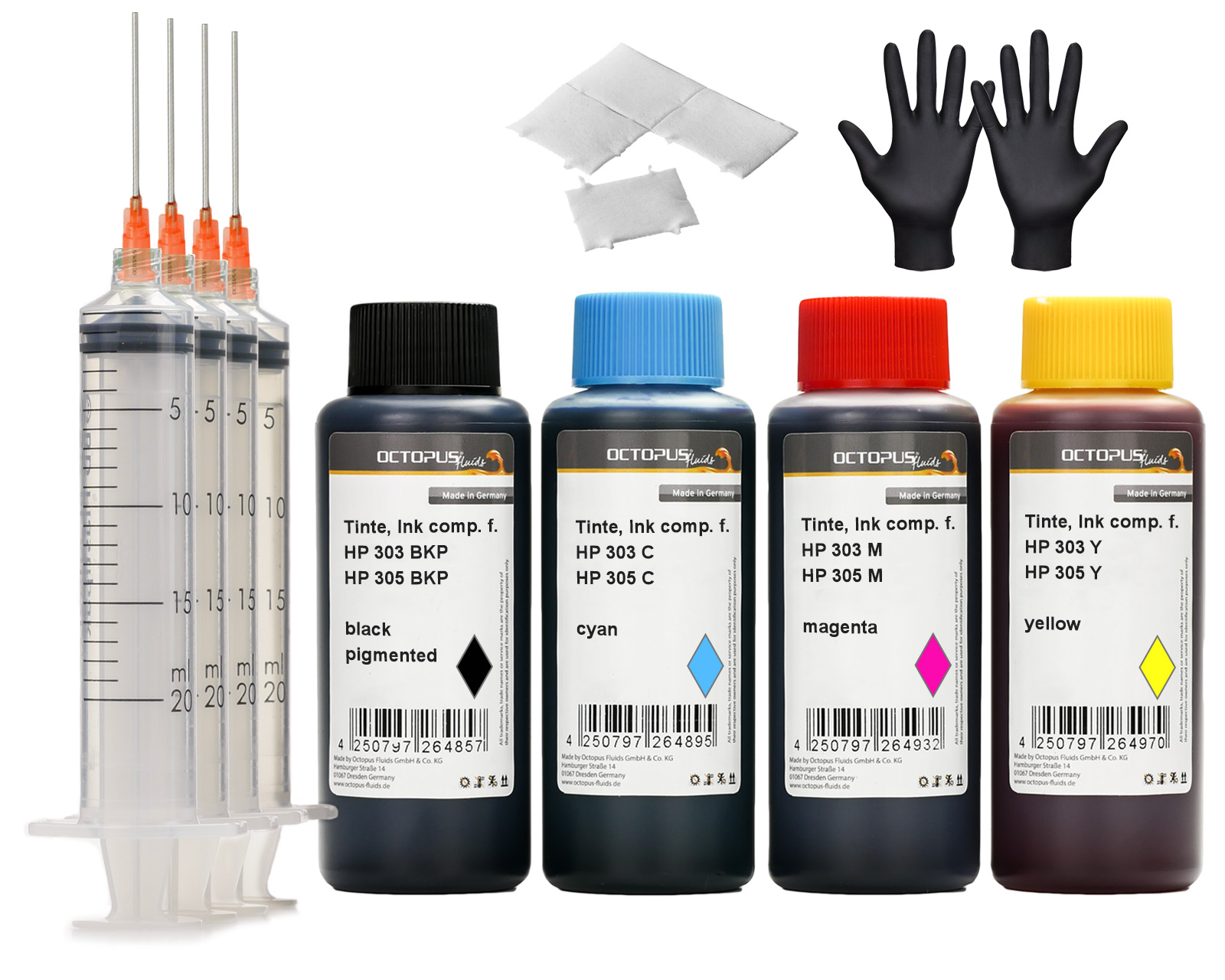 Refill ink set compatible for HP 303 and HP 305 Ink Cartridges, DeskJet, DeskJet Plus, Envy, Envy Pro
Refill ink set compatible for HP 303 and HP 305 Ink Cartridges, DeskJet, DeskJet Plus, Envy, Envy Pro
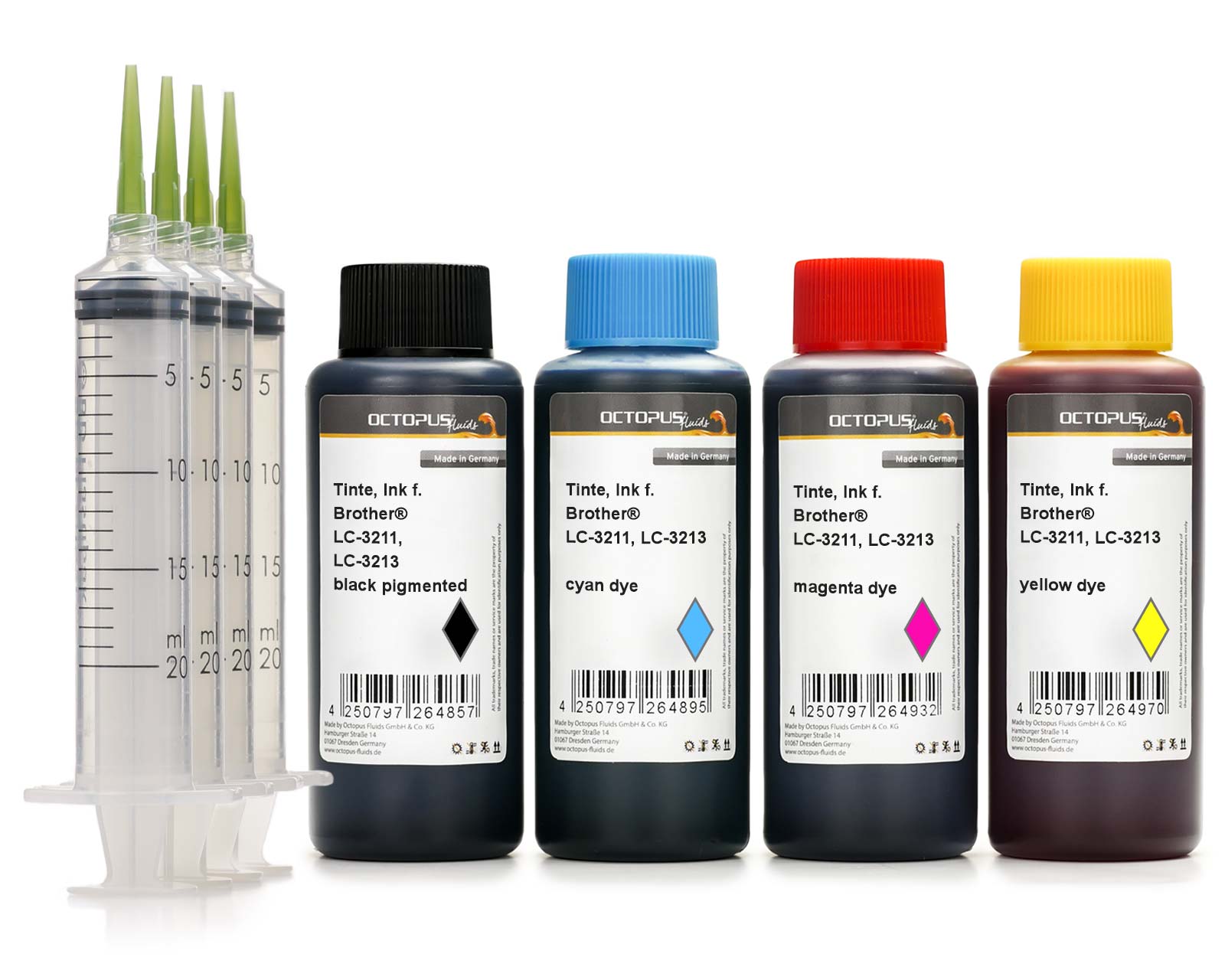 Refill ink comp. with Brother LC-3211, LC-3213 cartridges, CMYK
Refill ink comp. with Brother LC-3211, LC-3213 cartridges, CMYK
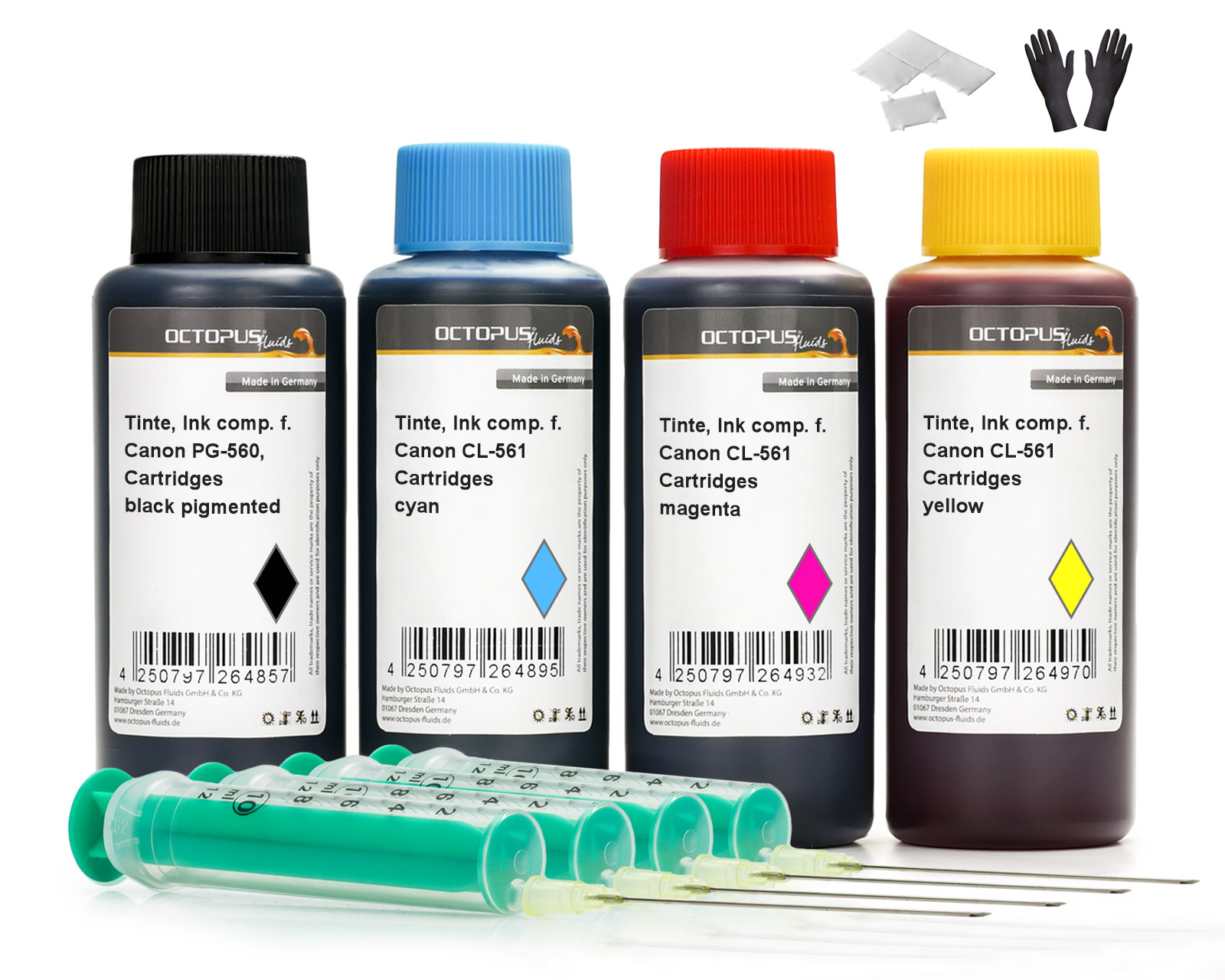 Octopus printer ink set compatible for Canon PG-560, CL-561 ink cartridges, Canon Pixma TS 5300, 7400
Octopus printer ink set compatible for Canon PG-560, CL-561 ink cartridges, Canon Pixma TS 5300, 7400







